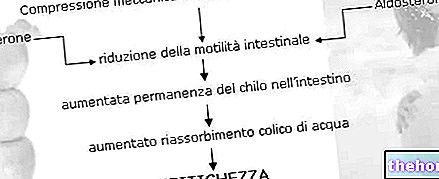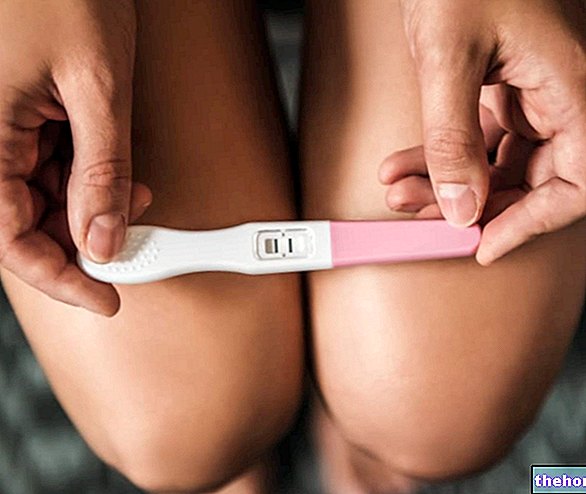"Villocentesi
Which women should undergo a CVS?
In public facilities, women aged 35 or over (at the presumed date of birth), together with pregnant women who have an "indication provided for by the national protocol, can undergo free CVS after genetic counseling.
CVS is the test of choice to recognize chromosome or gene diseases within the first 3 months of pregnancy. It is therefore advisable if the couple is at high risk for such diseases (previous children or affected family members, advanced maternal age, etc.). ) or if the fetus after ultrasound (nuchal translucency) and bi-test, is positive at screening (therefore at "high" risk of chromosomal abnormalities).

How long will it take to receive the results of the CVS? How reliable are they?
Preliminary information is available two or three days after the villocentesis, while for the definitive report it is necessary to wait 10-15 days. The different waiting times reflect two different analytical techniques of the placental sample, which where possible are always performed jointly.
Chromosomal analysis must be performed on dividing cells and, in the case of chorionic villi, two methods of investigation are used: the direct method for early diagnosis and cell culture to optimize diagnostic reliability. After sampling by CVS, the sample is then divided into two aliquots; one part is used for direct analysis, the other for post-culture analysis.
With the direct method, the spontaneous divisions of the cells taken are exploited; each of these cells, dividing several times, gives rise to daughter cells with the same chromosomal makeup.
With the culture method, on the other hand, the cells are sown on a special slide and incubated, in order to favor their multiplication and originate the relative colonies (aggregates of cells with the same chromosomal set of the original cell). After a few days, when the colonies are sufficiently numerous, the chromosome examination will then be performed.
In the absence of a sufficient quantity of chorionic villi it is not possible to prepare both preparations. All this decreases the diagnostic reliability of the CVS, because the sample can be contaminated by cells of maternal origin; therefore, the culture has the purpose to eliminate the risk of analyzing maternal rather than fetal cells, with the consequent risk of false negatives.Only the study of a high number of cells can in fact allow to avoid a diagnostic error.
Relying once again on statistical data, in two cases out of a thousand samples it may happen that the cell culture does not develop enough to allow a definitive diagnosis. In this case, after 2-4 weeks, it may be necessary to repeat the CVS, although in most cases an amniotic fluid sampling is opted for. These and other investigations may also be necessary when the analysis leaves some doubts of interpretation (3 cases out of 100).
Although they are particularly small (we are talking about one case every 500-1000 tests), the possibility of false positives, that is the risk of a diagnosis of abnormality in healthy fetuses, should not be excluded. On the other hand, despite the apparent absence of anomalies, at birth the child could show genetic defects that cannot be detected by studying the chorionic villi. Many malformations, in fact, are not associated with chromosome anomalies, and can eventually be observed only with an accurate ultrasound examination between the 19th and 22nd week of pregnancy. There may then be problems concerning the anatomy, or other functions of the organism that cannot be recognized before birth.
Villocentesis: when to undergo the exam?
CVS is performed after the 10th week of gestation, since in previous periods there is a risk of fetal lesions; in fact, an association has been highlighted between CVS performed before the 9th week and the appearance of fetal congenital defects, such as limb anomalies (1.6 % at 6-7 weeks, 0.1% at 8-9 weeks).
Normally, therefore, the CVS is performed between the 11th and 13th week of pregnancy; when necessary, it can in any case be carried out in later periods.
Villocentesis or amniocentesis?
The main advantage of CVS compared to amniocentesis lies in the possibility of performing the examination at an early stage, despite the fact that the amniotic fluid can now be taken between the 11th and 13th week (as a rule it is performed between the 15th and 18th, therefore at the beginning of the third trimester of pregnancy). The villocentesis also offers the possibility of reducing the waiting times for diagnostic results. Therefore, in the presence of a serious pathology of the fetus, thanks to the villocentesis, the couple can decide to terminate pregnancy early, with less physical and mental stress.
CVS is more suitable for the study of any genetic diseases, while amniocentesis is more suitable for couples at risk of chromosomal diseases or for the diagnosis of fetal infections.
As anticipated, the abortion risk related to CVS (1%) is very similar to that affecting amniocentesis (0.5-1%). positive trimester (duo test, nuchal fold), advanced maternal age and favorable placenta position.
It should be remembered that unlike amniocentesis, CVS does not provide information on the risk of neural tube and abdominal wall closure defects (because it does not allow the alpha-fetoprotein dosage). It will therefore be important to recommend that the patient perform an ultrasound for the study of the fetal anatomy at 20-22 weeks, with particular attention to the morphology of the spine and abdomen.
If the CVS shows fetal abnormalities, what is the deadline for termination of pregnancy?
According to the law that regulates the voluntary interruption of pregnancy (Law 194/78), the request for interruption for the pregnant woman, who is diagnosed with a serious fetal anomaly after the first 90 days and in any case before the 22nd week of gestation, is subordinate to the medical assessment of the condition of serious threat to the mental health of the pregnant woman constituted by the continuation of gestation.




























